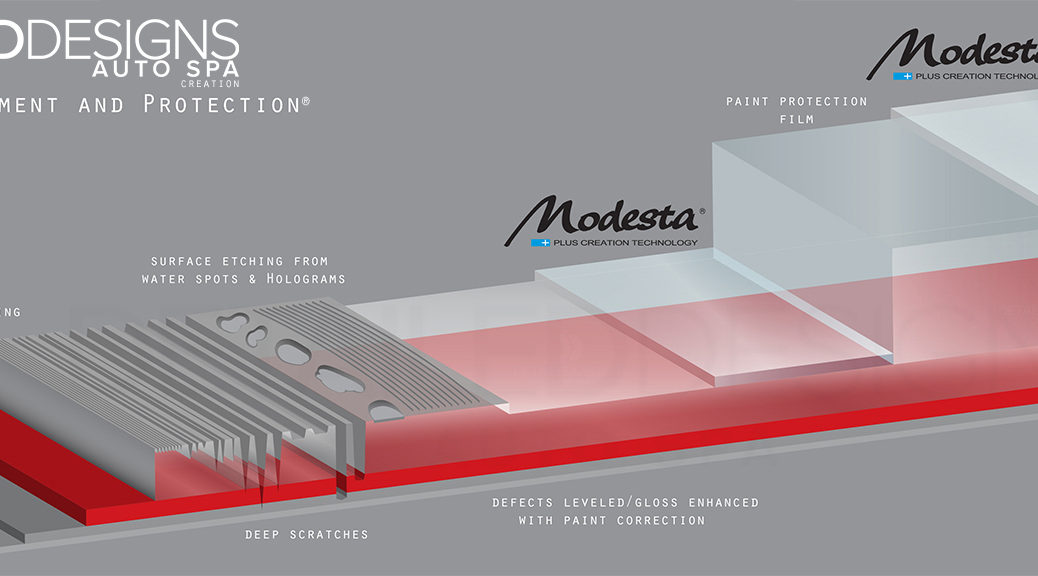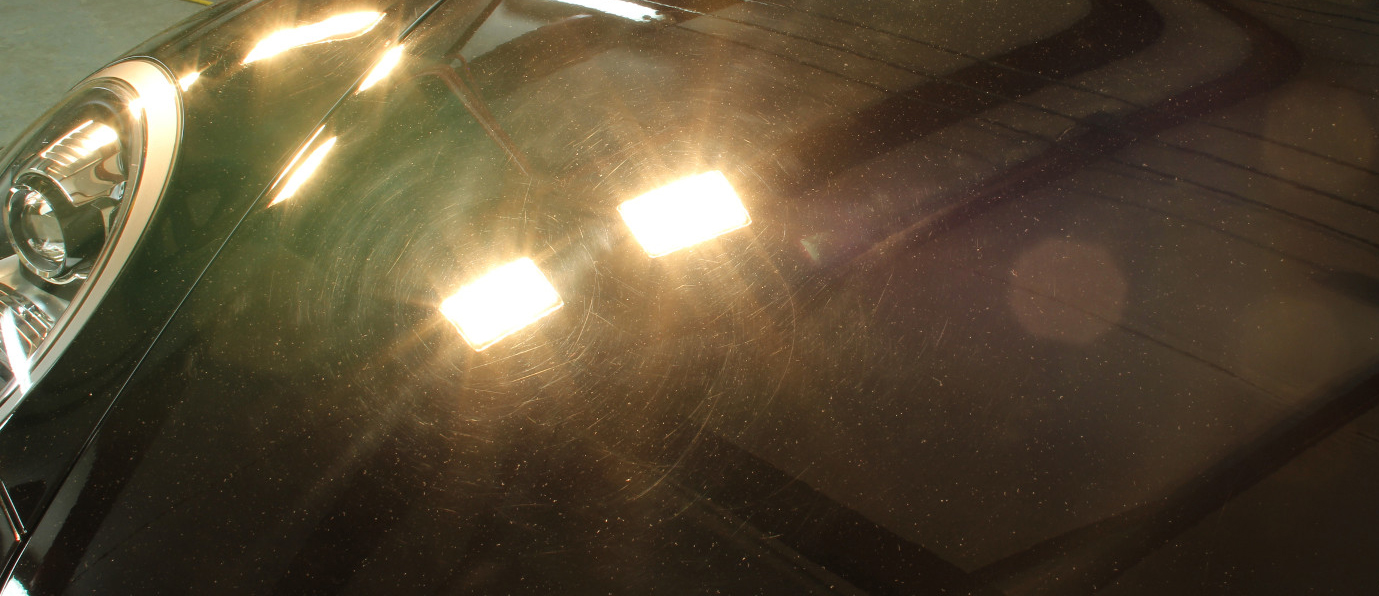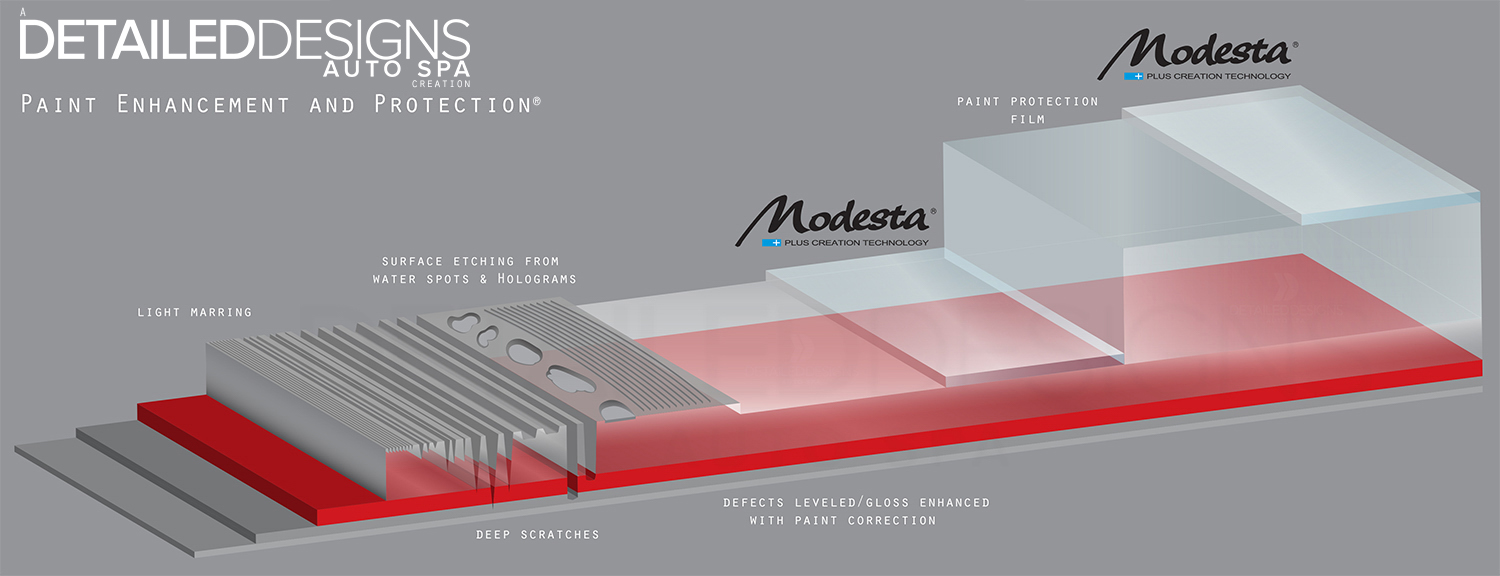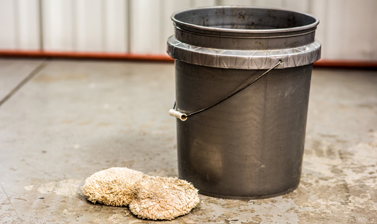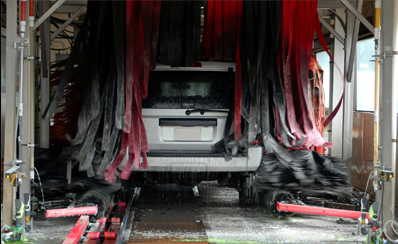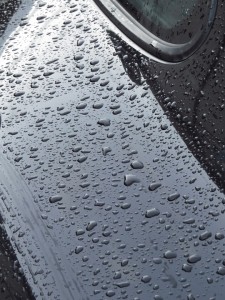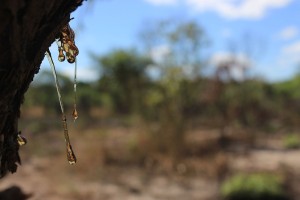We’ve all seen the claims; levels orange peel/texture in paint, prevents rock chips, protects your paint from swirl marks and scratches, lifetime warranty, guarantees to not lose x% of gloss over a given period, fire resistance and more….
In the world of paint coatings, claims like these and others, are not uncommon and when one thinks about how there really is not an inexpensive car and even a decently nice car is pretty expensive, it is easy to know why owners want to protect their cars and the sensitive paint finish. If you look at the claims many coating companies make, some appear more appealing to you than others. But are you being given the real scoop or are you being fed a scoop of something?
I want to share my take on warranties for paint coatings after years of using multiple coatings and having played with many that are available. Is a factory paint/ceramic coating warranty a real value to you? Does it give real peace of mind or does it give a false sense of protection?
Let me begin my critique by stating that modern paint coating systems are amazing when applied in an ideal way and the owner understands their limitations (read more on this topic HERE). They provide owners with a large measure of protection that waxes and sealants are incapable of giving, can induce a beautiful look that is long lasting and can ease long term care. But in many cases, paint coatings are put forth in a way that either says or infers that they are invincible and/or will last forever while giving you protection that appears unreal. At the core, what we are after is how coatings are presented and what you should realistically expect.
The concept of the guarantee for a paint coating
In the world of paint coatings, everyone is hunting to make themselves look like the best value and option. For some, a warranty is a great tool for doing so. After all, doesn’t a warranty from the manufacturer make you feel better protected than one with a shorter warranty term or maybe one that has no factory warranty?
Manufacturers know that warranties make people feel good. And quite frankly, warranties in and of themselves are not bad. The concern comes in when you consider the claims against the fine print in warranties.
The claims and the fine print
Looking at the claims can make even the most skeptical person feel at ease. So what’s the deal then? The claims are awesome and the warranty protects you, right? This is where things can be a bit mixed up.
I am not going to pick on any specific coating but the key to knowing what is what and what is not is the fine print. If a company claims their coating will prevent your car from being scratched, isn’t it reasonable to say so in the warranty? From what I have seen, the written warranty fine print, in short, allow manufacturers to dodge accountability for that same scratch you were told the coating would protect it against. The way this happens is like this: The manufacturer claims scratch proof in the marketing/media and then the warranty fine print says that if your car is scratched, you clearly did not care for it properly and the warranty is voided. Only “proper car care” is covered. Well….isn’t that obvious? Isn’t it obvious that misuse or neglect would not be covered? Sure, but that’s not what is claimed in the marketing media. And there you are….you paid the premium for the product that made extreme claims and really have no protection. For some, they feel that they can perform less than ideal care and are protected. So they believe that car care just got crazy-easy because they can now take their baby through the swirl-o-matic(automatic car wash) because they paid a premium for the coating to be able to do so. But when that time comes and the paint is swirled up, the manufacturer has the paper to show you that you were not covered at all. For those performing proper car care, how can you prove you did not misuse the car? How are you able to protect yourself from that fine print? Can you? -I will leave that up to you to answer.
What about something like claims that the gloss will not degrade by x% over a period of time? How does one quantify that the gloss has degraded or not? Did the installation facility use a gloss meter(this is a real tool to measure gloss) and are you having that finish inspected regularly with the gloss meter? How is one supposed to make a sound argument that the product is not living up to the claim? In all likely hood, they can’t….you can’t….it is hype and it is not a protection.
For extreme claims like fire resistance or impact resistance, there is no need for a highly specialized meter to tell you if there is a problem. You will clearly see the problem. What you need is the warranty paper to make a clear claim that you are protected. If the warranty does not implicitly state a type of protection, the claims made in media are worthless. You will not be protected.
The dollar value of most warranties/guarantees from the manufacturer is also suspect in many cases. In most cases, your max claim is capped at a very low dollar value and may be limited to only having the product reapplied. For ones with damaged paint, your factory guarantee only ensures you get that same sorry performing product back on your car. For anyone with an expensive repair due to an ill performing coating or one that caused damage, are you really going to want that product back on top of your paint? What value is your warranty providing you with at the end of the day?
The real-deal in protection for yourself
Historically, warranties in the service industry are honored by the company a customer dealt with, with minimal interaction with the manufacturer. This is no different in the coating industry. So a good question to ask is, is a factory warranty necessary? In my opinion, no and let me explain why.
If you ask the professional performing the paint coating installation on your car if they plan to stand behind their work regardless of the manufacturer, they should absolutely say yes. They are really your first line of defense should there ever be a problem. Their willingness to pass the buck or not will give you an idea of if you have real protection. We have already established the ease of dodging accountability in a warranty if the fine print allows such. So the installation professional really is your source for protection. There is a chain of accountability and it goes like this:
Private car owner < Installation facility < Product area distributor < Manufacturer
If a link of that chain is broken, the one that is a step below suffers. For the private owner, it doesn’t really matter what happens above the installer because he is the one you should be dealing with. And when given the support of those above the installer, the installation facility has the tools to support their client. No manufacturer warranty or guarantee is required for a private owner to make this the case. As a matter of fact, a warranty with fine print that excludes accountability really provides an installation facility with means to pass on the accountability if they decide to. It also gives a false sense of protection to an owner.
On this topic I always thought Tommy Boy(and his dad) said it a great way:
What you should be hunting is not a manufacturer warranty or guarantee. You should be hunting for the most qualified professional to be performing the work and standing behind that work after they have educated you.
There are plenty of industries where warranties/guarantees are wonderful. They may offer to replace a part that may be expensive and that is that. But coatings are not modular parts that can be easily swapped out. They are protective wear and tear layers that will age over time and for your satisfaction, it is important that you understand proper car care and how to take care of them. A false warranty does not do that. They give a false sense of security and may even have you taking poor care of the finish due to the idea that you are protected.
I also want to make this clear. A warranty or lack thereof a warranty does not take away the professional you are dealing with. A product can have a shoddy warranty that is as crooked as could be possible, but if your professional takes care of you, you are covered. The focus should be on education, ongoing care and support, not a warranty with exclusions of accountability.
But what is better is a company that uses products by companies that do not use snake-oil tactics and promotes proper car care from day one coupled with an industry professional that stands behind their work. Pay for a product based upon the merit of that product and not marketing hype. THAT is the recipe for being completely satisfied and having a car that looks gorgeous for years!
In conclusion, it is to your benefit to search out the fine print before paying a premium for a coating that makes extreme claims or really any claims at all. Do not lean on a manufacturers paint coating warranty as a security blanket, lean on the professional/facility you are using! Get the exclusions and examine them in a way that is a protection to you and your money. Properly maintain your car and be sure to limit exposure to harmful elements like those found in this article HERE.
Thanks for taking the time to read this article. If you enjoyed it, please be sure to share!
